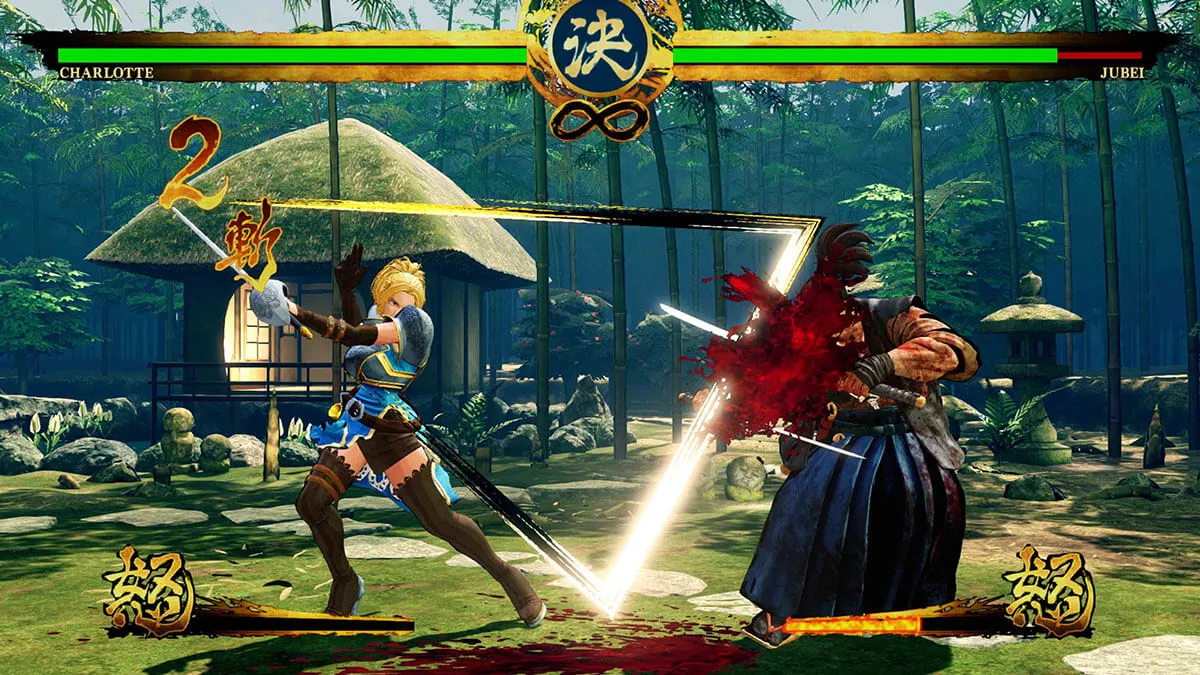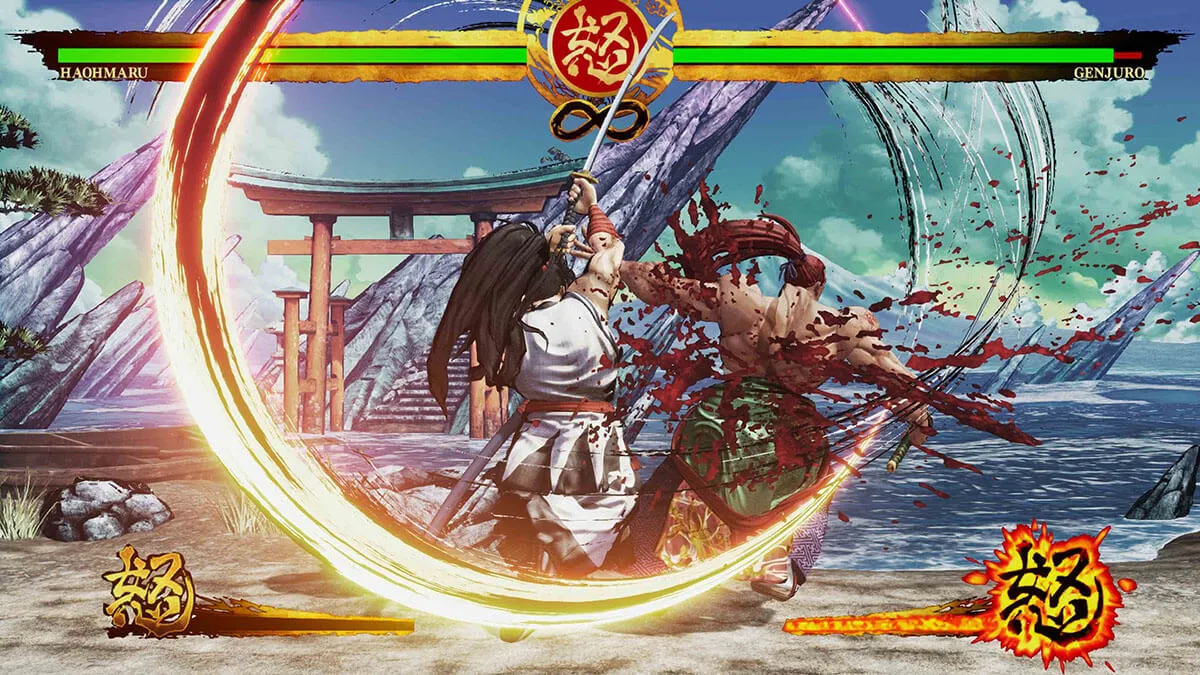
Samurai Shodown: A Modern Take on Classic Weapon-Based Fighting
Samurai Shodown, also known as Samurai Spirits in Japan, is a legendary name for fighting game enthusiasts, particularly those familiar with the arcade scene of the 1990s. Known for its simple yet strategic weapon-based combat, distinct Japanese aesthetic set in the Tenmei era, and focus on swordplay, the series holds a special place in fighting game history. After disappearing from the scene in 2008, coinciding with SNK’s financial struggles, the franchise has been resurrected after an 11-year hiatus with a new installment released in June 2019. This revival promises to retain the core elements that made the series successful while incorporating modern gaming sensibilities.
 Samurai Shodown – Gameplay Screenshot
Samurai Shodown – Gameplay Screenshot
Simple Yet Deep Combat System
Unlike the flashy combos of Guilty Gear or Dragon Ball FighterZ, or the intricate systems of Street Fighter, Samurai Shodown focuses on a more streamlined approach to fighting. This accessibility allows anyone, even those new to the genre, to pick up and play. This ease of entry is a significant strength of the 2019 release, maintaining a core tenet of the series (with a few exceptions).
However, don’t mistake simplicity for a lack of depth. While the entry barrier is low, mastering Samurai Shodown requires a keen understanding of its mechanics. The game emphasizes fundamental fighting game principles: frame data, spacing, and neutral game. While Street Fighter uses these elements as a foundation for combos and dynamic gameplay, Samurai Shodown builds its entire identity around them. Players who invest time in understanding these fundamentals are rewarded with powerful counterattacks, disarmament tactics, and evasive maneuvers.
Each character boasts unique moves and stances, requiring dedicated study to fully utilize their potential. Failure to do so often leads to swift defeat. The deliberately slower pace of the game creates a tense atmosphere, emphasizing the life-or-death nature of each sword clash. One mistake can easily cost a player the entire match.
This focus on tactical gameplay sets Samurai Shodown apart from many other fighting games. Victory requires careful consideration of every action, reading the opponent’s intentions, and anticipating their moves. This strategic depth is a key source of enjoyment for Samurai Shodown players.
Limited Single-Player Content
 Samurai Shodown – Character Select Screen
Samurai Shodown – Character Select Screen
Despite its strengths, Samurai Shodown suffers from a lack of engaging single-player content. Outside of the story mode, challenge mode, and training mode, there’s little to keep solo players entertained. While the game excels at player-versus-player combat, its replay value outside of this core component is limited.
The initial roster of 16 characters, while featuring many returning favorites, feels somewhat small for a modern fighting game. Out of the 16, 13 are familiar faces from previous installments, reducing the element of discovery for players looking to find a new main character. While planned DLC will add more characters over time, the slow release schedule of four characters every two months until February 2020 could lead to player attrition, especially given the strong competition from titles like Soul Calibur VI, Street Fighter V, and Dragon Ball FighterZ.
Conclusion
Samurai Shodown successfully revives a classic fighting game franchise with its unique focus on weapon-based combat and strategic gameplay. Its accessibility allows newcomers to jump in easily, while its depth rewards dedicated players who master its intricate mechanics. However, the limited single-player content and relatively small initial roster may disappoint some. The game’s long-term success hinges on SNK’s ability to deliver compelling new content and maintain player engagement in a competitive fighting game landscape.





Comments (0)